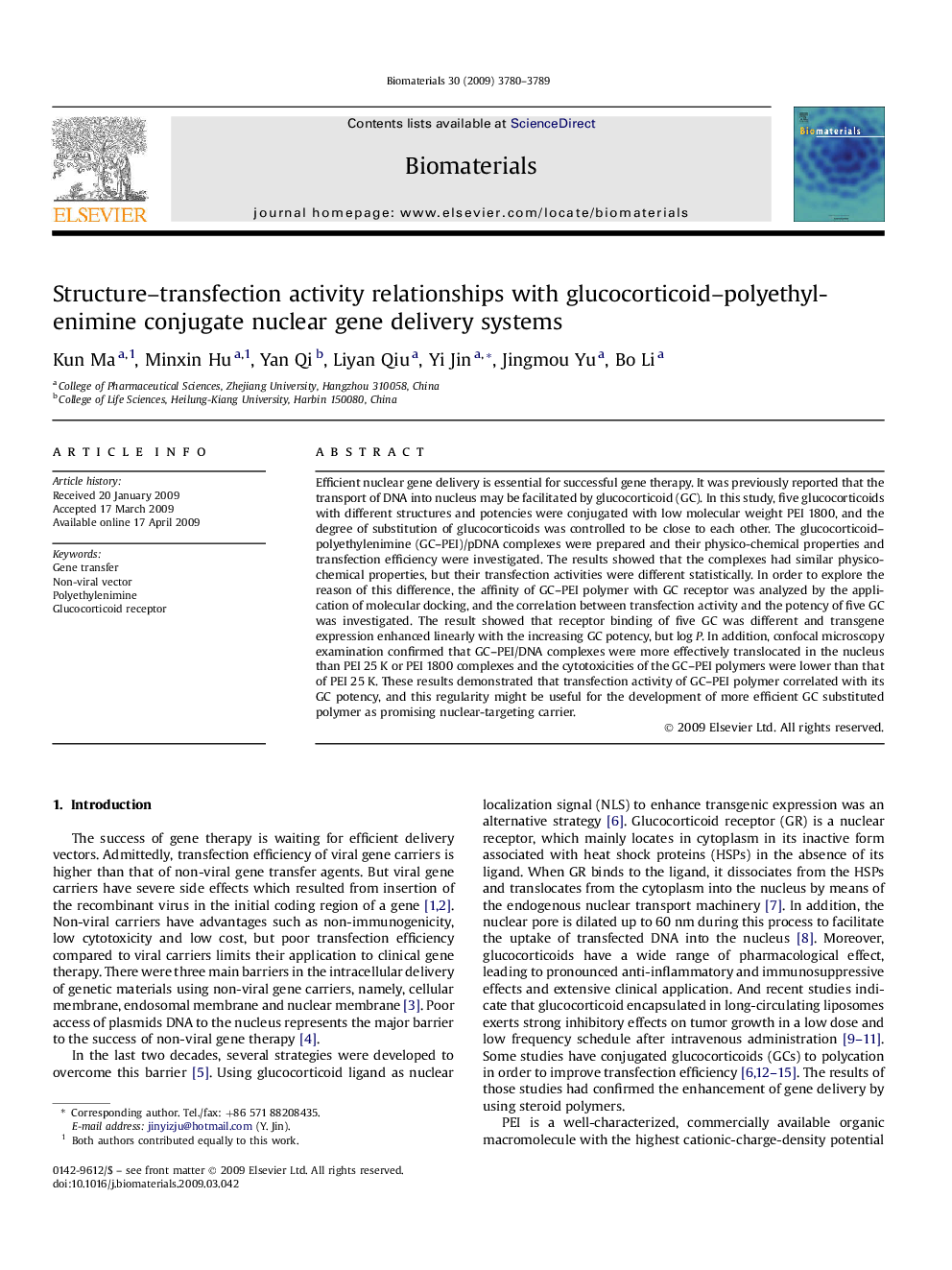| Article ID | Journal | Published Year | Pages | File Type |
|---|---|---|---|---|
| 9209 | Biomaterials | 2009 | 10 Pages |
Efficient nuclear gene delivery is essential for successful gene therapy. It was previously reported that the transport of DNA into nucleus may be facilitated by glucocorticoid (GC). In this study, five glucocorticoids with different structures and potencies were conjugated with low molecular weight PEI 1800, and the degree of substitution of glucocorticoids was controlled to be close to each other. The glucocorticoid–polyethylenimine (GC–PEI)/pDNA complexes were prepared and their physico-chemical properties and transfection efficiency were investigated. The results showed that the complexes had similar physico-chemical properties, but their transfection activities were different statistically. In order to explore the reason of this difference, the affinity of GC–PEI polymer with GC receptor was analyzed by the application of molecular docking, and the correlation between transfection activity and the potency of five GC was investigated. The result showed that receptor binding of five GC was different and transgene expression enhanced linearly with the increasing GC potency, but log P. In addition, confocal microscopy examination confirmed that GC–PEI/DNA complexes were more effectively translocated in the nucleus than PEI 25 K or PEI 1800 complexes and the cytotoxicities of the GC–PEI polymers were lower than that of PEI 25 K. These results demonstrated that transfection activity of GC–PEI polymer correlated with its GC potency, and this regularity might be useful for the development of more efficient GC substituted polymer as promising nuclear-targeting carrier.
